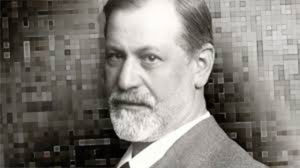Du totem au Moïse Freud entre pair et patriarche
Résumé
"Totem et Tabou" et le "Moïse de Michel Ange" sont deux textes dont Freud termine la rédaction en 1913 et qui méritent plus d'un rapprochement.
Outre le fait qu'ils traitent de psychanalyse appliquée, Freud a consacré à leur rédaction une énergie dont l'ampleur ne peut être évaluée qu'à la mesure de l'inhibition qu'a suscité leur publication : mouvements affectifs, signes, d'un désir resté largement inconscient.
Ces deux textes traitent en effet de la "nature" du lien social et il existe sans doute bien des raisons sociales et historiques pour expliquer la cécité de Freud quant à l'objet exact de son écriture acharnée.
Notre hypothèse est qu'en outre, au moment où le mouvement psychanalytique et l'Association internationale connaissent leurs premiers soubresauts et dissidences, Freud n'aurait pu faire le lien entre ses objets d'études et le devenir de son groupe de disciples, qu'en faisant le deuil de sa foi en la rationalité. En fils éclairé des Lumières, il s'est attelé jusque-là à soumettre la déraison à la mesure de la raison : il lui faudra quelques années, l'introduction du narcissisme et de la pulsion de mort pour faire le deuil de sa foi en un lien social devenu enfin transparent à la raison.
L'analyse et la voix de la raison s'avèrent insuffisantes à maintenir un lien suffisant de convivialité ; à ce titre ces deux textes occupent une place charnière dans l'évolution historique de la pensée de Freud.
Samenvatting
"Totem en Taboe" en de "Mozes van Michelangelo" zijn twee teksten die door Freud in 1913 beëindigd werden en in meer dan één opzicht raakpunten vertonen.
Maar het schrijven ervan heeft Freud enorm veel energie gekost wat af te leiden valt uit de remming die bij hem door het publiceren ervan opgewekt werd. Deze uit zich door affectieve roerselen en tekens, voortkomend van en rijkelijk onbewust gebleven verlangen.
Deze twee teksten handelen inderdaad over de sociale band. Zonder twijfel zijn er heel wat sociale en historische redenen om de blindheid van Freud uit te leggen voor wat het exacte voorwerp van zijn hardhekkig volgehouden schrijven was.
Wij zijn verder de hypothese toegedaan dat het voor Freud op de ogenblik onmogelijk was het verband te zien tussen het voorwerp van zijn studie en wat er van zijn groep leerlingen zou geworden. Op dat ogenblik immers gingen er door de Internationale Psychoanalytische vereniging de eerste stuiptrekkingen en kande zij haar eerste scheuringen.
Om daarvan bewust te worden had Freud het rouwproces om zijn geloof in de rede moeten kunnen doormaken. Als schrandere zoon van de Verlichting heeft hij zich tot dan toe ingespannen om het onverstand aan de matiging van de tede te onderwerpen. Daarvoor zal hij enkele jaren nodig hebben, o.a. met de inbreng van her narcisme en de doodsdrift, om te kunnen rouwer om zijn geloof in een voor de rede doorzichtig gewoorden sociale band. De analyse en de stem van de rede blijken ontoereikend om een band van uitnodigend medeleven in stand te houden.
In dat opzicht vormen deze twee teksten een onontbeerlijck verbindingastuk in de historische evolutie van Freud's gedachtengang.
Summary
The two texts "Totem and Tabou" and "The Moses of Michelangelo" which Freud finished editing in 1913 deserve more than one comparison. Besides the fact that they deal with applied psychoanalysis, Freud devoted to their preparation an energy the extent of which can only be measured by the inhibition which their publication caused : affective reactions, signs of a desire remaining largely unconscious.
The two texts deal in fact with the "nature" of social relations and without any doubt social and historical reasons exist to explain Freud's blindness concerning the exact object of the furyof his writing.
Our hypothesis is that, among other things, at the moment when the psychoanalytical movement and the International Association were experiencing their first stocks and divisions, Freud might not have been able to make the link between the objects of this studies and the evolution of his group of disciples other than by doing the work of mourning for his belief in reason.
An enlightened son of reason, he had devoted himself up to that moment to submitting unreason to the measure of reason : it would take him some years, the introduction of narcissism and the death instinct to mourn his belief that social relations would at last become transparent to reason.
Psychoanalysis and the voice of reason had shown themselves lacking the means of maintaining an adequate link of friendly cohabitation : because of this, these two tests occupy a key position in the historical evolution of Freud's thought.





